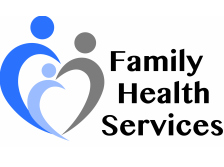Diabetes News – Sept 2019
September is National Cholesterol Education Month
What is cholesterol?
Cholesterol is a waxy, fat-like substance found in your body and many foods. Your body needs cholesterol to function normally and makes all that you need. Too much cholesterol can build up in your arteries. After a while, these deposits narrow your arteries, putting you at risk for heart disease and stroke.
How does diabetes affect cholesterol?
Diabetes tends to lower “good” cholesterol levels and raise triglyceride and “bad” cholesterol levels, which increases the risk for heart disease and stroke. This common condition is called diabetic dyslipidemia. Diabetic dyslipidemia means your lipid profile is going in the wrong direction. It’s a deadly combination that puts patients at risk for premature coronary heart disease and atherosclerosis. Studies show a link between insulin resistance, which is a precursor to type 2 diabetes, and diabetic dyslipidemia, atherosclerosis and blood vessel disease. These conditions can develop even before diabetes is diagnosed.
If you have high cholesterol, what can you do to lower it?
You can lower your cholesterol levels through lifestyle changes:
- Low-fat and high-fiber food (Eat more fresh fruits, fresh vegetables, and whole grains).
- For adults, getting at least 2 hours and 30 minutes of moderate or 1 hour and 15 minutes of vigorous physical activity a week. For those aged 6-17, getting 1 hour or more of physical activity each day.
- Maintain a healthy weight.
- Don’t smoke or quit if you smoke.
In addition, your doctor may prescribe medications to treat your high cholesterol.
To be smarter about what you eat, you’ll may need to pay more attention to food labels. As a starting point:
- Know your fats. Knowing which fats raise LDL (bad) cholesterol and which ones don’t is key to lowering your risk of heart disease.
- Cooking for lower cholesterol. A heart-healthy eating plan can help you manage your blood cholesterol level.
Here is a recipe that is heart and diabetic friendly, as well as simple and delicious!
Italian chicken and vegetable packet (Serves 4)
Ingredients
- 4 skinless, boneless chicken breast, about 3 ounces
- 2 cup diced zucchini
- 2 cup scrubbed and diced potato
- 1 cup diced onion
- 1 cup sliced baby carrots
- 1 cup sliced mushrooms
- 1/2 teaspoon garlic powder
- 1 teaspoon Italian seasoning or oregano
Directions
Heat oven to 350 F.
Cut off a 12-inch sheet of heavy-duty aluminum foil or parchment paper. Fold the foil or parchment paper in half, unfold and spray with cooking spray.
For each packets: Center the chicken breast on the sheet. Top with 1/4: zucchini, potato, onion, carrots and mushrooms. Sprinkle garlic powder and Italian seasoning on the chicken and vegetables.
Bring the foil together and make small, overlapping folds down the length of the packet to seal. Twist the two ends several times to make a tight seal so the liquid won’t escape during cooking.
Place the packet on a cookie sheet and bake for 45 minutes, until chicken and vegetables are tender.
*This recipe may also be prepared on the grill. Use heavy-duty aluminum foil and place it off to the side of the flame. Turn midway through the cooking time.
HEALTH & WELLNESS SCREENING – offered by Firelands Regional Medical Center
You must Pre-register for all Lab Work at 419-557-7840.
Sandusky Health & Wellness Screening
Firelands Main Campus
1111 Hayes Ave. Sandusky, OH
Saturday, September 14
7:00 AM – 9:30 AM
Castalia Health & Wellness Screening
Dr. Kuns office
101 South Washington
Castalia, OH
Saturday, October 19
7:30 AM – 9:30 AM
Health & Wellness Screenings include:
- Complete Blood Count with Metabolic & Lipid Panel (No Eating or Drinking for 12 Hours – Water Allowed – includes liver and kidney function studies, fasting blood sugar, thyroid, cholesterol, HDL/LDL and triglyceride levels along with a complete blood count.) – $45;
- Hemoglobin A1C (A three month report card on how well your blood sugars have been running. A test used to diagnose diabetes and/or to evaluate how well your treatment plan is working.) – $25;
- PSA (Prostate Specific Antigen)- $30;
- Vitamin D – $35;
- TSH – $25
Diet and exercise are an essential part of diabetes management. So is routine testing.
The A1C test—also known as the hemoglobin A1C or HbA1c test—is a simple blood test that measures your average blood sugar levels over the past 3 months. It’s one of the commonly used tests to diagnose prediabetes and diabetes, and is also the main test to help you and your health care team manage your diabetes. Higher A1C levels are linked to diabetes complications, so reaching and maintaining your individual A1C goal is really important if you have diabetes.
Last quarter, 68% of our diabetic patients had an A1C of less than 9%. Talk with your provider to discuss the right options for you, including programs such as DEEP.
Diabetes Empowerment Education Program – DEEP
Just in! One more class has been added for this year.
Oct. 10, 17, 24, 31, Nov. 7 and 14
(Thursday afternoons) from 2:30pm to 4:30pm
Perkins Township Hall
2610 Columbus Ave.
Sandusky, OH 44870
COST:
Free
CONTACT:
Serving Our Seniors /Tina Elmlinger
419-624-1856
The presenter is Tina Elmlinger, Healthcare Advocate Trainer. Classes are held once a week for six weeks for Erie County residents who are aged 60 or older and are pre-diabetic or diabetic. A spouse or caregiver may also attend. Advanced registration is required, 419-624-1856. Please call and leave your name, phone number and the name of the program you wish to attend. If the class is cancelled, you will be notified.
For additional date and locations contact Serving Our Seniors at 419-624-1856.



